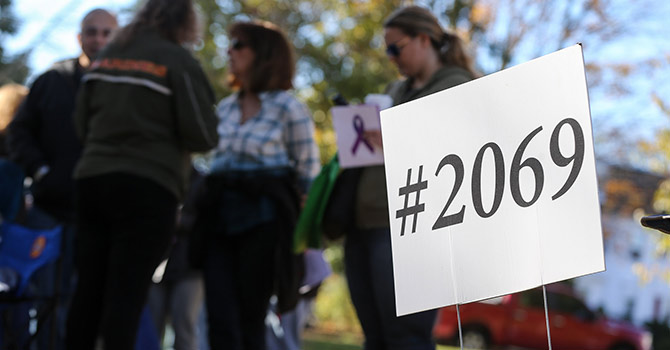How large an economic impact could a church with as few as 25 members have in a rural Southern town?
To determine an answer, Partners for Sacred Places, in partnership with The Duke Endowment and the UNC Charlotte Urban Institute, studied 87 congregations over two years for its report “The Economic Halo Effect of Rural United Methodist Churches in North Carolina.”
The study found that congregations, although not often thought of in these terms, can be economic powerhouses in their areas. The participating churches, on average, were responsible for more than $735,000 per year in economic impact in their local communities.
The North Carolina Halo study examined the contributions these UMC churches made to their communities, the services they provided to both members and nonmembers, and the spending they brought to their regions.
The research focused on six areas: community-serving programs, outdoor recreation space, direct spending, education and child care, magnet effect (drawing visitors to the area for events), and individual impact (guidance and support in one-on-one settings).
Some ways in which a church may benefit the community are obvious — organizing food pantries and directing child care centers. Others, less so, like creating food waste reduction programs and hosting community cookouts.
Gethsemane UMC in Greensboro, a participant in the study, is known as “the hot dog church” for its popular Saturday hot dog lunch, which attracts people from across the region.
Even weddings and funerals can have an economic impact, drawing people to a church’s area, where they stay overnight, buy gas and eat.
“When you’re in the day-to-day of ministry, you’re people-focused. I would think, ‘We offered a box of food to a family who needs food through our food pantry, and that made an impact.’ But to learn these numbers through the study — that is the difference between qualitative and quantitative data,” said the Rev. Ben Carson, the pastor of FaithBridge UMC in Blowing Rock, which participated in the study.
Public officials often view churches as serving only their members, or at least only members of their denominations. The Halo study found this to be untrue: 72% of those who benefited from the presence of, and programs hosted by, the participating churches were not congregational members.
The rural UMC churches in the study reported serving as civic spaces. People vote, eat and drop their kids off for day care there. They attend Girl Scout meetings there or make use of the churches’ playgrounds or baseball fields. These churches are community assets that provide support and economic benefits to their neighborhoods.
Carson confirmed that the reach of his church’s food pantry, Casting Bread, extends well beyond the FaithBridge UMC congregation.
“The poverty rate for our county is around 30%. Folks were coming to us and saying they were hungry, and Jesus had something to say about that. So we started feeding folks,” he said. “We developed into a client-choice pantry so people could have dignity — for folks to be able to choose their food, to know a friendly face and receive a hug.”
FaithBridge’s public-serving food pantry is just one example of what the Halo study found to be true throughout these North Carolina congregations: they have a significant economic impact on their communities.
Pastors need to tell the story of their churches’ economic impact and consider new types of funding to support their community presence, such as foundations, government and donors outside their faith traditions, the study’s findings suggest.
“Look beyond your membership, and even your denomination, to fundraise. Anyone who cares about your community, whether religious or not, should care about your church building’s longevity — because buildings are assets for ministry. They enable the ministry you do,” said Rachel Hildebrandt, the director of the National Fund for Sacred Places at Partners, who directed the Halo study.
Learning about and owning the economic impact of their churches can also help pastors steward existing donors and volunteers. When Carson received his Halo report, he learned that his congregation was responsible for about $1.1 million annually in economic impact in Blowing Rock. He spoke from the pulpit about the numbers as another way of looking at church impact.
“We celebrated when the report came out, and I sent it to our donors and said thank you. I said, ‘This is your blessing,’” Carson said. “It contributed to a greater overall sense of belonging within our community.”
And for judicatories that often must make tough decisions about where to funnel church resources, and when to close or reconfigure a church, the Halo study makes clear that membership numbers and budgets do not tell the whole story.
Some very small congregations, with tiny budgets, have outsize importance to their communities. If they were to close, the towns would lose economic resources and in some cases the only civic spaces available to all. The study suggests that new metrics are needed to determine where to direct denominational resources and what defines a successful church.
“Judicatories need to ask themselves, ‘What will happen if this church is closed? What programs will be displaced, and who will be affected?’” Hildebrandt said. “Worship attendance does not tell the full story of a church’s importance.”


















